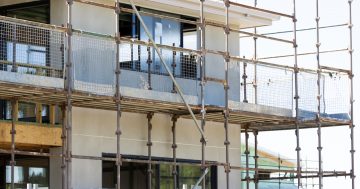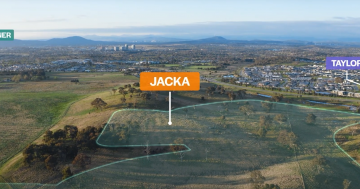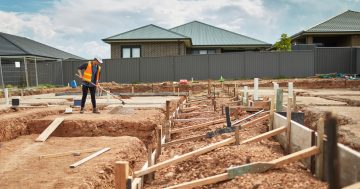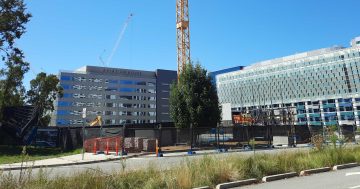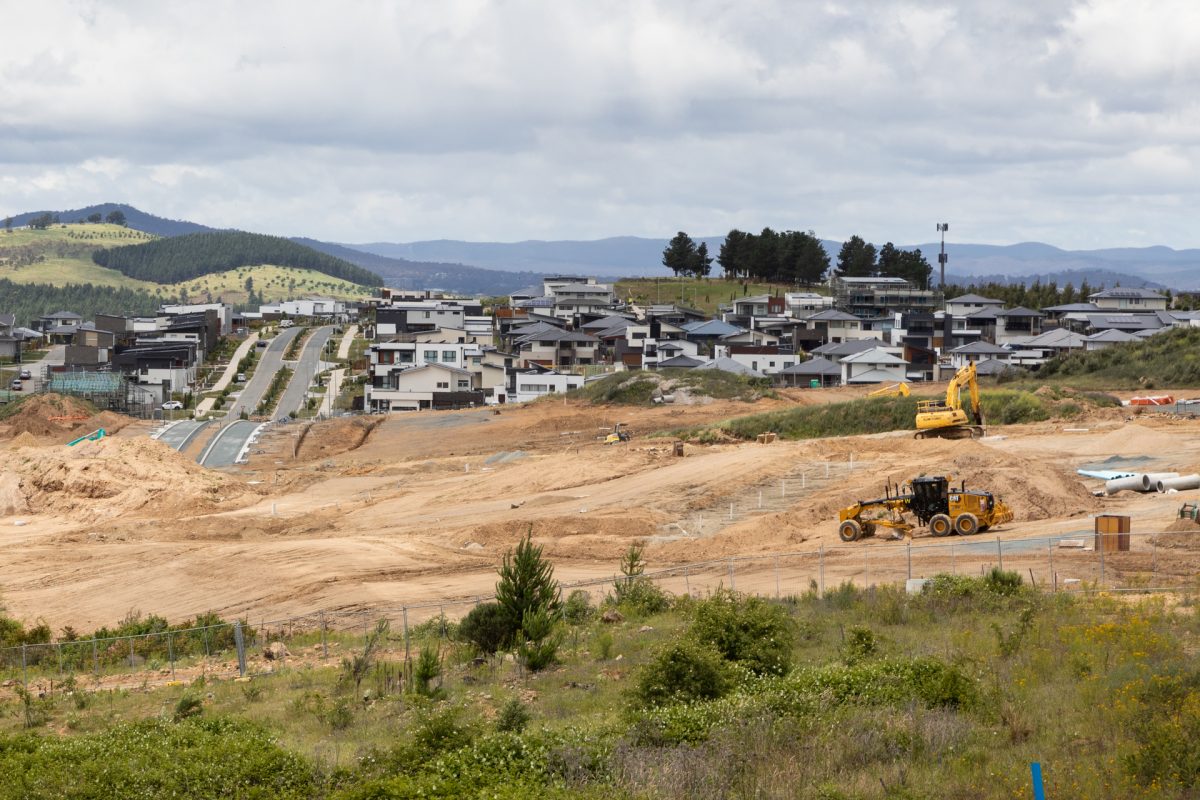
New home builds in the Territory are forecast to slump in the next couple of years, with the MBA blaming labour shortages, inflationary pressures and slow land release. Photo: Michelle Kroll.
New home builds will slump in the next few years, partly due to the squeeze on supply imposed by the ACT Government’s land release program.
That’s the message from Master Builders Australia, which forecasts new residential dwellings in the ACT to fall from 5810 in 2022 to 5000 in 2024 before recovering to 6000 in 2026.
MBA ACT CEO Michael Hopkins said these forecasts reflect inflationary pressures and labour shortages.
“Local residential construction is being constrained by the ACT’s tight land market, slow land release policies and bottlenecks in the planning approval process,” he said.
“The current and predicted level of residential construction is not sufficient to keep up with Canberra’s forecasted population growth.”

MBA ACT CEO Michael Hopkins says even building dual occupancies on RZ1 blocks in Canberra remains contentious. Photo: Region.
Mr Hopkins said the construction industry will await the release of the draft Territory Plan later this year for planning reforms to remove the existing legislative barriers to the construction of new housing in established suburbs.
“Reforms which encourage a mix of housing types located close to infrastructure and services in established suburbs have been commonplace for years in many other parts of Australia, yet even building dual occupancies on RZ1 blocks in Canberra remain contentious,” he said.
The ACT Government expects to release that draft plan for community consultation before the end of the year.
It’s not a new position for the MBA to take on land supply, which has previously described the system – where the government is the major player in the market – as one that is “fundamentally flawed” and has accused it of undersupplying the market.
That’s a position also taken by the Opposition which, much like the MBA, references recent heavily oversubscribed land ballots in new suburbs as proof the program is not meeting demand.
But that’s not to say every builder expects a downturn in business due to land supply.

Luke van der Linden from Fresh Renovations in Canberra has a slightly different take on the land supply issue from the MBA. Photo: Supplied.
In fact, for Luke van der Linden of Fresh Renovation, what critics call a ‘drip-feeding’ of land to the market might even be a good thing.
His company works on established homes in existing suburbs rather than new builds, renovating and retrofitting them so people essentially end up with a new home without needing a knockdown rebuild.
“We’re probably positively impacted by that because people get a bit more creative and look instead to the homes they have and what they can do with them rather than buying a new block in a new suburb,” he explained.
“That’s what we specialise in. We aren’t fans of the knockdown-rebuild model. Instead, we say to the client, ‘we can save you a couple of hundred grand and work with the home you have’.
“It’s also about taking the ‘green’ approach, rather than throwing stuff out all the time.”
That’s not to say Mr van der Linden isn’t feeling the pressure as interest rates continue to rise and many clients become ineligible for pre-approval secured months ago.
“I’m expecting a low point at the end of the year and then hoping things will start to pick up again,” he said.
While he’s not necessarily experiencing labour shortages, he is noticing the shortfall in labour is pushing prices up. Materials shortages, on the other hand, are easing up.
The ACT Government argues it is doing what it can to address the housing affordability crisis.
Opposition Leader Elizabeth Lee has tried to force the government to “use all available levers at its disposal, including land supply”, to stem the housing affordability crisis, arguing Canberrans want choice and deserve to have the option to live in a detached home as opposed to an apartment or unit.
But the government has rejected this “simplistic” argument.
In response, Housing Minister Yvette Berry said increasing land supply would simply mean the industry – including developers and builders – would be unable to keep up with demand.
A spokesperson for the Territory government said it is planning for an increase of around 30,000 dwellings over the next five years.
“While the ACT Government land release program is fundamental to ongoing residential and non-residential development activity, the private sector also plays a critical role in the supply of land for a variety of uses – most importantly residential dwellings,” the spokesperson said.












